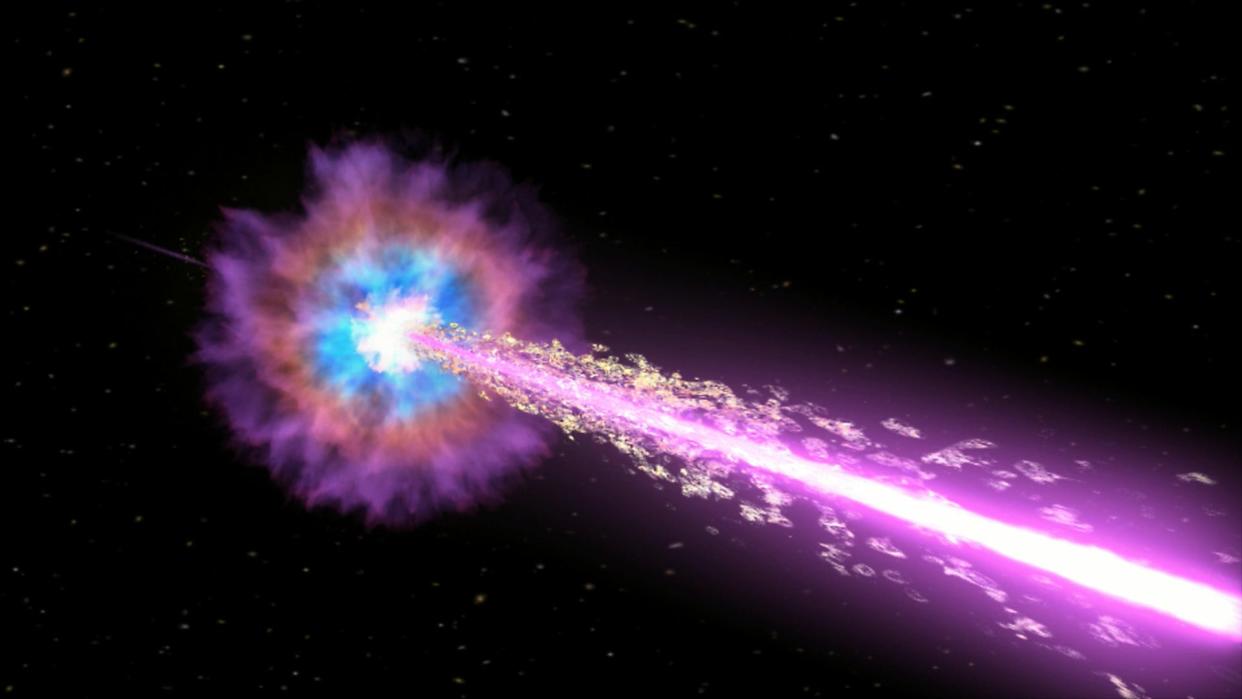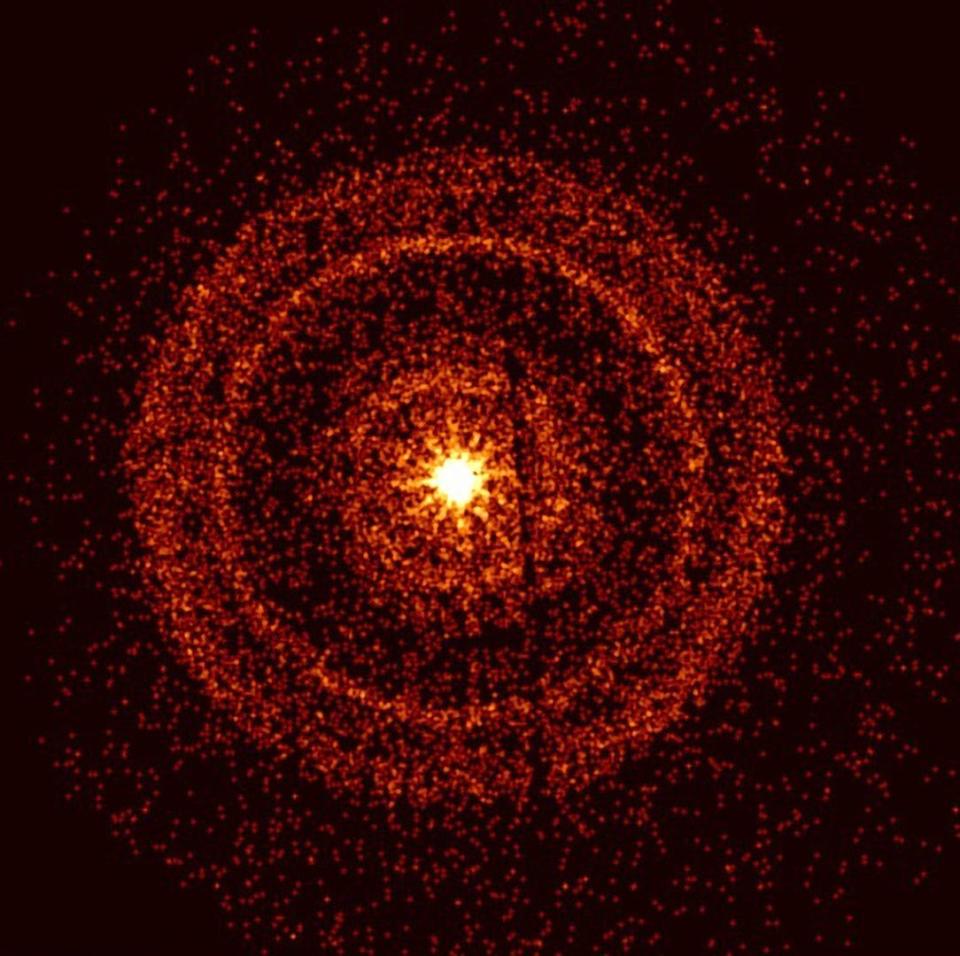NASA telescope images reveal brightest explosion ever recorded, as a star collapses into a black hole

NASA space telescopes detected the brightest explosion ever recorded.
Astronomers think the bright burst came from a dying star collapsing and forming a new black hole.
Images show the faint object erupting with powerful gamma rays.
NASA telescopes have detected the brightest, most high-energy flood of radiation from space ever recorded.
About 1.9 billion years ago, a dying star collapsed, exploding in a powerful burst of gamma rays that careened toward Earth. Finally, they washed over our planet on October 9. They set off detectors on three telescopes in orbit: the Fermi Gamma-ray Space Telescope, the Neil Gehrels Swift Observatory, and the Wind spacecraft.

Those telescopes, and other observatories around the world, quickly homed in on the source of the radiation: a distant object now called GRB 221009A, pulsing with the powerful glow of its gamma-ray emissions.
It was the most luminous, powerful event ever detected, NASA announced on Thursday. The telescopes' images show just how dramatic the explosion was.

"In our research group, we've been referring to this burst as the 'BOAT', or Brightest Of All Time, because when you look at the thousands of bursts gamma-ray telescopes have been detecting since the 1990s, this one stands apart," Jillian Rastinejad, a PhD student at Northwestern University, said in a statement.

Rastinejad led a group of researchers who conducted follow-up observations on Friday, taking more measurements as the gamma rays continued to flood past Earth.
The radiation probably came from a supernova explosion — a dying star collapsing into a black hole. It could be decades before another gamma-ray burst this bright appears again.
"It's a very unique event," Yvette Cendes, an astronomer and postdoctoral fellow at the Harvard-Smithsonian Center for Astrophysics, told Mashable, adding that a giant gamma-ray burst in a galaxy so close to us is "incredibly, incredibly rare."
"It's the equivalent of getting front row seats at a fireworks show," she said.
The sheer power and brightness of the ancient explosion allows astronomers to collect lots of data on it, which could reveal new insights about how stars die, how black holes form, and how matter behaves near the speed of light, as it's ejected from a supernova. It helps that the object is relatively close to us, compared to other gamma-ray bursts astronomers have detected.
That proximity "allows us to detect many details that otherwise would be too faint to see," Roberta Pillera, a Fermi LAT Collaboration member who led initial communications about the burst, said in a NASA statement. "But it's also among the most energetic and luminous bursts ever seen regardless of distance, making it doubly exciting."
Read the original article on Business Insider

